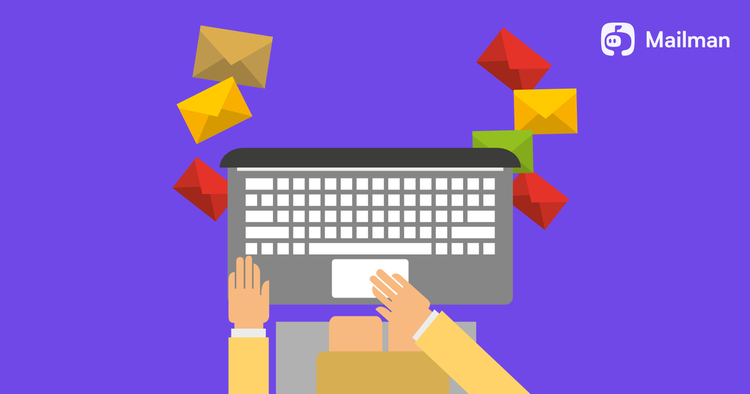Google's productivity expert shares how to make work from home work for you

Google’s productivity advisor Laura Mae Martin helps Google employees (from interns to executives) to use their time efficiently and increase their work productivity. Here are her ten tips to ace your work-from-home routine:

1. Have a designated workplace
It’s tempting to work wherever there’s open space in your home: near the kitchen table, on the corner couch, or from your bed. Don’t. Fix a workplace in your house and stick to it. Having “a consistent room, spot, desk or chair that you “go to” every day to work helps your brain associate that spot (smells, sights, and sounds) with getting work done.”

Ensure you’ve all the essentials—water bottle, stationary, tech (mouse pad, speakers, etc.)—at your workplace, so you don’t leave it often. Also, brief your family about your workplace and work time to avoid disturbance.
“And just as important as creating your "work spot" is determining the areas where you don’t work.” These are areas where you know you won’t be able to do work—and hence should avoid. Think bedroom (no one gets work done on a cozy bed), a place where your family gathers, etc. “This helps create mental distance and allows you to relax often even though your work is at home with you.”
2. Use video communication tool like a pro

Video communication has overtaken other means of communication in remote work—whether it be meetings or 1-on-1 chats. So, it’s helpful if you learn it.
Here are a few tips to get you started:
a) Use Krisp.ai for background noise cancellation.
b) Choose a video tool that helps you plan and share your meeting agenda, offers live transcriptions, makes taking notes simpler, and provides advanced collaboration features (watching key moments, tagging teammates, etc.) We recommend Vowel.
c) Set the meeting agenda and ask everyone to prepare before coming into the meeting.
d) Be intentional about letting everyone speak and hearing everyone’s opinions.
e) Set clear roles and responsibilities for everyone to act upon after the meeting.
f) Record meetings for everyone to refer to it later.
“If you need some (virtual) human interaction, set up an agenda-less video chat with your team or friends in the office—it’s not a formal meeting, just time to chat and check in with each other.”
3. Practice “one tab working”
Having multiple tabs open on your computer is the prime reason for procrastination (I’m guilty of this, too). So, while you’re working, open only one tab (or two, depending on how many you need for the task) to focus on one task at a time. You’ll get your work done faster and efficiently. And surely beat procrastination.
4. Act the part
“Resist the urge to wake up and start working in bed—it doesn’t help your brain get in the “mood” of being productive (Initially, it was tough for me, but with time I got better at it). The best antidote is to work far from your bed and not have any sofa/couch near your workspace—just you, your working table, and relevant accessories.
Start a routine and stick to it, “like waking up, getting dressed, eating breakfast, then “commuting” to your new workspace. Staying in your pajamas, while comfortable, will make you feel less like it’s a regular workday and make it harder to get things done.”
5. Create a personalized schedule according to your energy levels
The best part of working from home? No rigid 9-5 schedule. You can decide when to work. Take advantage of this to plan your day according to your peak energy levels. For example, if you feel energized during the morning, wake up early and finish the tasks in the morning. Or, if you’re a night owl (like me), schedule your tasks accordingly. “Productivity is not just about what you’re doing, but more importantly when you’re doing it.”
6. Working from home doesn’t mean working all the time
Setting boundaries is key to a successful work-from-home schedule.
Here are some ways to get started:
a) Educate your co-workers about your work duration. Don’t entertain work requests outside of it. Avoid setting expectations that you’re available 24/7.
b) Communicate your non-negotiables to your team.
Some of which can be:
i) “I’m not available 24/7. Communicate with me on the pre-accepted work time.”
ii) “I don’t work on weekends.”
iii) “Don’t communicate with me on WhatsApp. I prefer work communication through email or Slack.”
c) Learn to say “no” to prioritize urgent tasks.
It’s equally important to rest. “Take mental breaks the way you would in the office—instead of walking to a meeting, walk outside or call a friend.”
7. Create a daily to-do list one day before
If you start your day not knowing what tasks to do, figuring them would waste another hour. And by the time you figure it out, you would probably lose the motivation to work. Having a strict to-do list that you follow religiously is the solution.
Use this daily plan template to create a list of hour-by-hour tasks you intend to do the next day. “If you fill it out the night before, you’ll wake up in the mindset of what you need to do that day.”
8. Finish that one thing you’ve been meaning to do
Working from the office rarely leaves you the time to do those tiny tasks you’ve been wanting to. “Working from home is a chance to catch up on some of your individual to-do’s—-finish those expenses, brainstorm that long-term project or read the article you bookmarked forever ago. Set up an ongoing list in Google Keep and refer back to it when you have pockets of downtime.”
9. Be empathetic
Work from home isn’t equal for everyone. “Some people only have a one-bedroom studio and spend their days there. Some people have spouses working from home, kids at home, or dogs at home.” So, there might be connectivity issues and background noises during meetings. It may also sometimes happen that someone’s low on energy. Consider all these when communicating with each other. Don’t ridicule yourself and your colleagues for this. Be patient and lead with kindness. A little empathy goes a long way!
Nail your work from home
I’ve been working from home and practicing these tips for the last 2 years at Mailman. The result? 10X work productivity, efficient communication with colleagues, and a healthy work-life balance.
So, implement the tips to enjoy these benefits.





